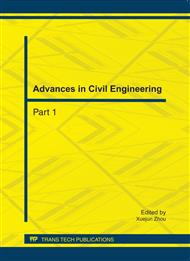p.3026
p.3033
p.3039
p.3043
p.3047
p.3051
p.3057
p.3061
p.3068
Literature Survey on Building Rankings by Indoor Environment Quality
Abstract:
Indoor environment quality can be used to rank the building performance. Environmental parameters involve operative or room temperature, predicted mean vote, predicted percentage of thermally satisfied, predicted percentage dissatisfied, air velocity, relative humidity, indoor air quality and so on. One or more parameters can be possible to establish a corresponding range for building classes. Average CO2 concentration level can be used as the index of indoor air quality to measure the office buildings or public places. Various authors in different climates or zones proposed different baseline for building grades. It should be develop a scientific methodology or evaluation system to give the convincing classification and explanation.
Info:
Periodical:
Pages:
3047-3050
Citation:
Online since:
September 2011
Authors:
Keywords:
Price:
Сopyright:
© 2011 Trans Tech Publications Ltd. All Rights Reserved
Share:
Citation:


